
The literature on the history of dress and social history that mentions civilian flag robe always mentions short perms and high-heeled shoes.
However, these literatures are all about fabric embellishment, length, and slit height as if it were an oracle, and there is no will to pattern it.
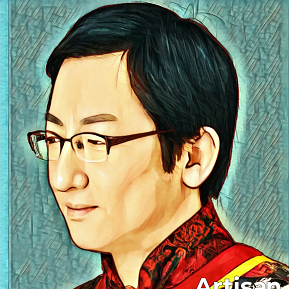
The history of Chinese dress in Japan and China is at the level of, “That’s not research”.

And silk stockings are not even mentioned….
In this page, we will focus on the stockings that set the standard for feminine beauty in the mandarin robe.
The relationship between qipao and stockings is divided into the following themes.
- History of Stockings
- The relationship between qipao and silk stockings
- Stockings in the history of world fashion
- The introduction and establishment of stockings in China
- Influence and relationship of silk stockings on qipao
Stockings is “丝袜” in Chinese.
In the past, this character was applied to silk stockings, but the word has been retained and now includes both silk and nylon.
- History of Stockings
- The relationship between qipao and silk stockings
- Stockings from the Perspective of World Fashion History
- Introduction and Establishment of Stockings in China
- Addendum: Regional differences in qipao sleeves and stockings
- Influence and relationship of silk stockings on qipao
- Conclusion: Stockings set the standard for female beauty in Minguo qipao
History of Stockings
Stockings, however, have changed in material and form in the 20th century.
Here is a brief summary of this.
Silk stockings and nylon stockings
The DuPont Company in the United States developed nylon stockings at the end of the 1930s. Therefore, it wasn’t until the 1940s that nylon stockings became popular all over the world.
Until then, silk stockings were the mainstream.
In this page, stockings up to around 1940 are written as silk stockings. When both types of stockings are included, they are written as stockings.
Garter Stockings and Panty Stockings
Stockings that cover both the buttocks and legs are called pantyhose. These were developed in the early 1960s in the United States.
Until then, the two legs of the stockings were not interlocked and stocking clamps were used. Garters were often seen. The combination of stockings and garters is often called garter stockings.
This page covers the period up to the 1960s, so please assume that I am talking about garter stockings.
The relationship between qipao and silk stockings
In the movie “The Last Caution”, which is set in Shanghai and Hong Kong around 1940, there is a scene where Tang Wei (Yu Yui) rolls up the hem of her qipao and puts on and off her silk stockings.
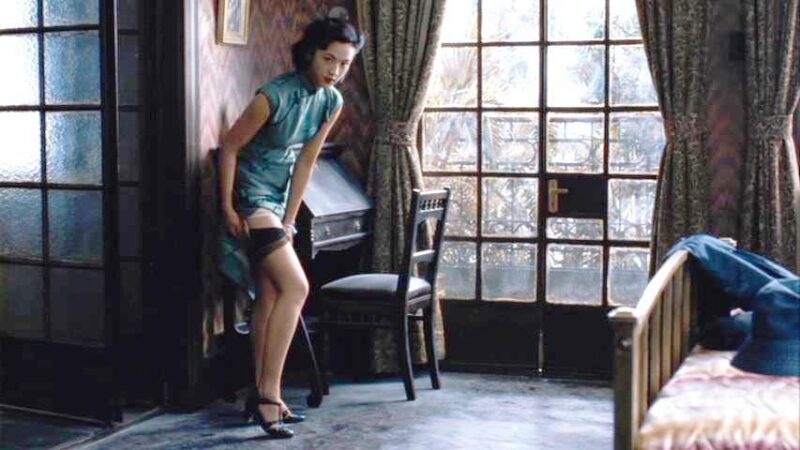
A scene from the film “Last, Caution” in which Yuyi, wearing a qipao, removes her stockings. ©2007 Haishang Films
There is a surprisingly inseparable relationship between qipao and stockings.
On the Chinese Internet, there is a common opinion that there is no need to wear stockings with qipao, but qipao looks best when worn with stockings.
I also think that if you want to wear stockings with the more revealing cosplay costumes of qipao, then you can just wear a micro-mini skirt.
In other words, not only should stockings be worn, but the relationship between the slit and the stockings, the stockings and the high-heeled shoes, and the qipao and the stockings should be considered.

In this respect, I think that civilian qipao is a good reference for fashion.
In particular, black stockings, which are common in revealing Chinese dress cosplay, are not suitable for qipao. In the 1920s, schoolgirls often wore short, two-piece versions of qipao. In the 1920s, schoolgirls often wore short two-piece flagpows with black stockings.
The black stockings were used in conjunction with the two-piece short qipao, but the emphasis was not on the qipao, but merely on the three levels of upper garment, lower garment and stockings. However, if the black stockings were exposed to the buttocks, the balance would not be good.
The memo “民国时期,穿旗袍的女人穿丝袜吗?“.
Stockings were the reason why the length of civilian flag robe became shorter and deep slits became popular in an era when raw legs and feet were unheard of, except for the swimming boom.
So let’s check out stockings from the perspective of world fashion history. Then, let’s look at the introduction and establishment of stockings in China. Then, we will look at the influence of stockings on qipao (mandarin robe) and the relationship between them.
Stockings from the Perspective of World Fashion History
In the history of world fashion, silk stockings and nylon stockings from the late 1930s onwards are elements that cannot be ignored.
Also, as mentioned in the article “Aesthetics of Civilian-style qipao traced through silhouettes and curves“, the silhouettes and lines of early civilian-style qipao were simple, smooth, and generous without being overly exaggerated. The women wearing the qipao were careful to “show” as well as “cover” at the same time, which made the dilemma more attractive (a double attack of dew and shielding).
This is something that should be noted in the history of world fashion.
What is unfortunate for fashion historians is that they are stuck with the explanation that women exposed their legs.
Strictly speaking, the next step is.
- Until the 19th centuryLeg cover-upLong skirts and pants. In Europe, bloomers appeared at the end of the 19th century, and with the spread of the bicycle, legs became the aesthetic standard. In China, it started in the 1920s…
- 1920s onwardsSee-through leg exposure and raw leg exposureStockings became popular, exposing the legs in a transparent way. At the same time, “anti- stocking” groups exposed their raw legs.
Especially with qipao, the dilemma of showing and hiding had a great impact. The double slit and stockings were used to express “dew” and “shielding”.

In Japanese, the expression goes like this. The stocking legs can be seen without permission in the Chinese dress of the revealing cosplay, whereas in Min Guo Qipao, the stocking legs can be glimpsed.
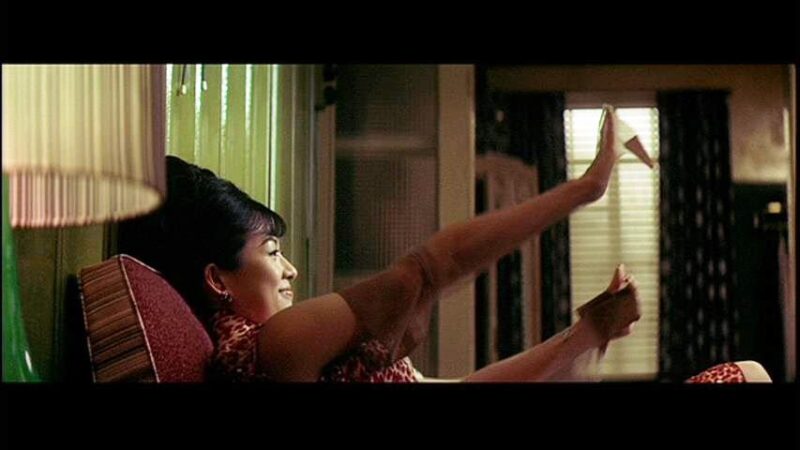
Zhang Ziyi, played by Pai Lin, is happy to receive a pair of garter stockings as a gift from her neighbor right after she moves in. From the film “2046” directed by Wong Kar-wai. ©2004 Block2Pictures. Inc.
In southern China, Hong Kong and Taiwan, it is indeed hot, so there are many people who wear qipao with bare feet and legs. Of course, the same is true for overseas Chinese and Chinese people in hot regions.
However, the heat alone cannot be the explanation.
Recall the scene in “2046,” a movie set in Hong Kong in the 1960s, where Bai Ling, played by Zhang Ziyi, was delighted to receive a pair of garter stockings as a gift.
If you are a woman who believes that stockings are an item of etiquette and a sign of feminine beauty, you may have worn stockings even in hot Hong Kong. Stockings in those days must have been precious and expensive.
Introduction and Establishment of Stockings in China
During the Ming Dynasty, most stockings were imported.
The popularity of stockings led to a major reformation of the traditional thick cloth stockings.
At the end of the 19th and beginning of the 20th century, employees of foreign companies wore more and more stockings, and dealers were limited to foreign-owned stores in treaty ports.

During the exclusionary Yihe Dan Incident (Yihe Dan Movement), armed uprising peasants on the north bank of the Yellow River sometimes called people wearing silk stockings and high-heeled shoes “Er Mao Zi” (Western rabbits) and threatened to cut them with knives in anger. “Even when they pleaded with him to stop, he tore off their silk stockings.

That’s why silk stockings were popular to some extent in the late Qing Dynasty.
In the late 1910s, after the Yihe Dan movement had died down and the Xinhai Revolution had taken place, the trend changed.
Western-style coats, skirts, dresses, and hats became more widely worn, and silk stockings also became popular.
By the end of the 1910s, silk stockings had become an urban fad.
The four most famous department stores in Shanghai at the time (Qian Shi, Yong An, Xin Xin, and Daxin) had a “Global Department Store” section that specialized in selling products from all over Europe and the United States.
This section included Western-style coats, suit skirts, and dresses.
Urban women in pursuit of fashion dressed in these novel fashions. Silk stockings were often used in conjunction with Western clothing. Gradually, they became popular among schoolgirls who wore Western clothes as their uniform.
Finally, stockings were no longer labeled as “barbarian socks.
According to the newspapers of the time, the market price of silk stockings sold by Shanghai’s Siangshi and Yongan department stores was 1 yuan for a pair. They came in two colors, black and white. Compared to the average monthly income of Shanghai people at that time, it was quite a luxury item.

When we think of stockings, we tend to think of beige or skin-colored stockings, but black and white stockings can also be a little transparent.
Addendum: Regional differences in qipao sleeves and stockings
Since it is hot in areas such as southern China, Hong Kong, Taiwan, and Southeast Asia, people often wear qipao without stockings.

No stockings and close sleeves or sleeveless (no sleeves) are also age related.

As people get older, they wear more stockings and less close sleeves and sleeveless.
Stockings and tights are indispensable during the cold season in an area like Shanghai where the temperature varies greatly.
Stockings, in particular, have a translucent effect and were useful when wearing qipao.
Let’s take a look at the effects and relationship of stockings to qipao.
Influence and relationship of silk stockings on qipao
The influence of silk stockings on qipao
In the 1920s, the rise of silk stockings had an impact on traditional undergarments.
- Stockings kept the legs warm and made the traditional and exaggerated pants obsolete.
- Stockings gave the legs a clean line.
Stockings are thin.
The new-style qipao (robe), which had been lightened by the removal of the Qing Dynasty cotton padding, looked much lighter when worn with stockings.
Schoolgirls in the new costumes wore knee-length skirts and showed off their beautiful and healthy shins, mainly because of the stockings.
This was mainly because stockings were available, and there was no culture of showing raw legs and feet yet. However, there have been everyday cases since ancient times, such as wearing work clothes and doing farm work, but in this case, exposing the legs is not considered flirting.
If they wore thick pants like the robe of the Qing dynasty, and then wore a new type of lightweight qipao over it, it would be quite uncool.

The same is true for the ao dai, which was the national costume of Vietnam. Both the upper robe, “ao,” and the lower pants, “khwan,” are lightweight.

Both were weight until around the turn of the 20th century. Under the global economy, all the cloth in the world lost its texture in those days.
The relationship between qipao and silk stockings
Stockings that became a standard of female beauty.
The stockings found a good balance between dew and shielding.
For the first time, the legs and feet of Chinese women were visible to the public. In addition, the fact that stockings show the skin of the legs and feet while blocking it makes the viewer pay even more attention.
Below-the-knee stockings that were transparent as they were, below-the-knee stockings that were transparent when the slit was opened, and the occasional garter stockings or raw thighs became the standard of female beauty in those days. Occasionally, a petticoat visible through the slit or hem became a supporting unit.
Schoolgirl Stockings
School uniforms and Chinese dresses also became popular among civilian girls.
Of course, stockings were not as popular in schools as in the streets.
The “Control Women’s Clothing” decree of the Beiyang government (1912-1928) banned silk stockings. The reason for this was that they showed too much skin.
Perhaps this is why we often see photos of schoolgirls in the 1930s and 1940s wearing long qipao (robe) with no visible leg parts, or qipao with thick stockings (or should I say tights?).
The fad of not wearing trendy stockings
On the other hand, there was the trend of not following the latest fads. This is the trend of not wearing the fashionable stockings.
In the south, such as Guangzhou, and in the north, such as Tianjin, it was fashionable not to wear stockings. At the same time, stockings were also in fashion.
For example, people wore high-heeled clogs or heeled shoes with bare legs, or painted flowers of various kinds on the backs of their bare feet or shins to make it look like they were wearing silk stockings.
Conclusion: Stockings set the standard for female beauty in Minguo qipao
From the 1920s, qipao and silk stockings were often used together, especially in areas like Shanghai where the temperature varies greatly.
At that time, women’s beauty standards were based on their legs and feet.
Stockings were used to cover these areas.
The stockings had the effect of both showing and blocking, which attracted many people. The aesthetic standard of “dewy” and “blocking” (the standard of female beauty) was born.
In the 1920s, the use of silk stockings with qipao gradually took root in urban areas. In the 1920s, the use of stockings with qipao gradually took root in urban areas, and although female students were sometimes banned from wearing stockings, it slowly spread from the 1930s.
Films set in Shanghai in the 1930s and 1940s and Hong Kong in the 1960s often showed stockings being removed.
Finally, I would like to conclude with a supplement on female beauty standards and shoes.
Female Beauty Standards
From the 1910s, brassieres were developed and sold in the United States. At that time, brassieres were similar to modern camisoles. In other words, it was just a flat piece of cloth that was placed over the breasts instead of giving them a three-dimensional shape.
The three-dimensional brassiere was put into practical use in the United States around 1930. It was only after this time that the chest and breasts became the standard for female beauty.

Marilyn Monroe’s image is that of 1950s America.
Women’s legs/feet and stockings have been and continue to be one of the most influential female beauty standards.
Shoes
Books on the history of Chinese clothing always focus on high-heeled shoes, but they fail to mention that there was actually a phase of low-heeled shoes.
Low-heeled shoes became popular in China in the 1910s and 1920s, and the trend towards high-heeled shoes began in earnest in the 1930s.

There is also an article I wrote about Flagstaff in Wong Kar-wai’s film 2046, which I mentioned on this page. Please take a look at it as well.
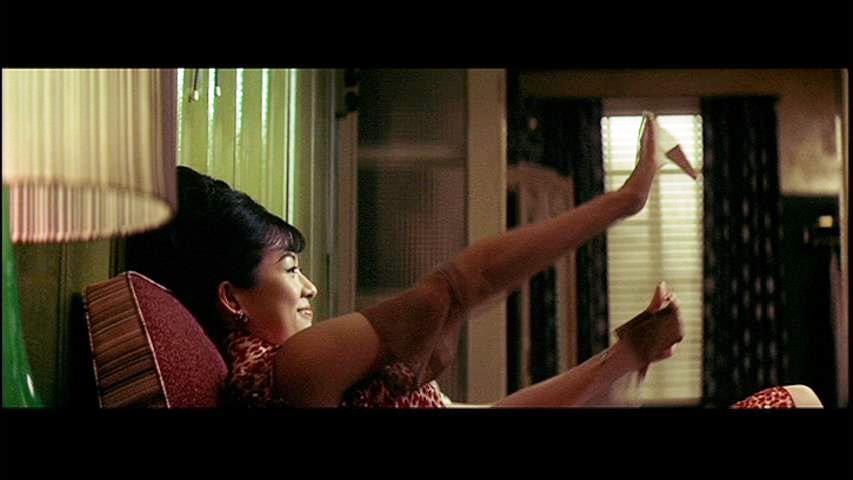
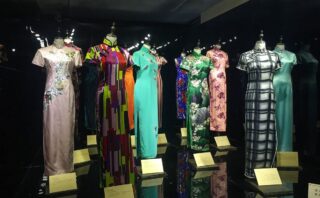

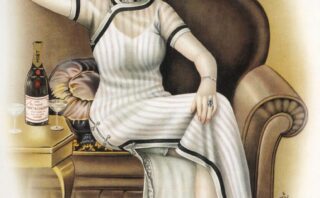


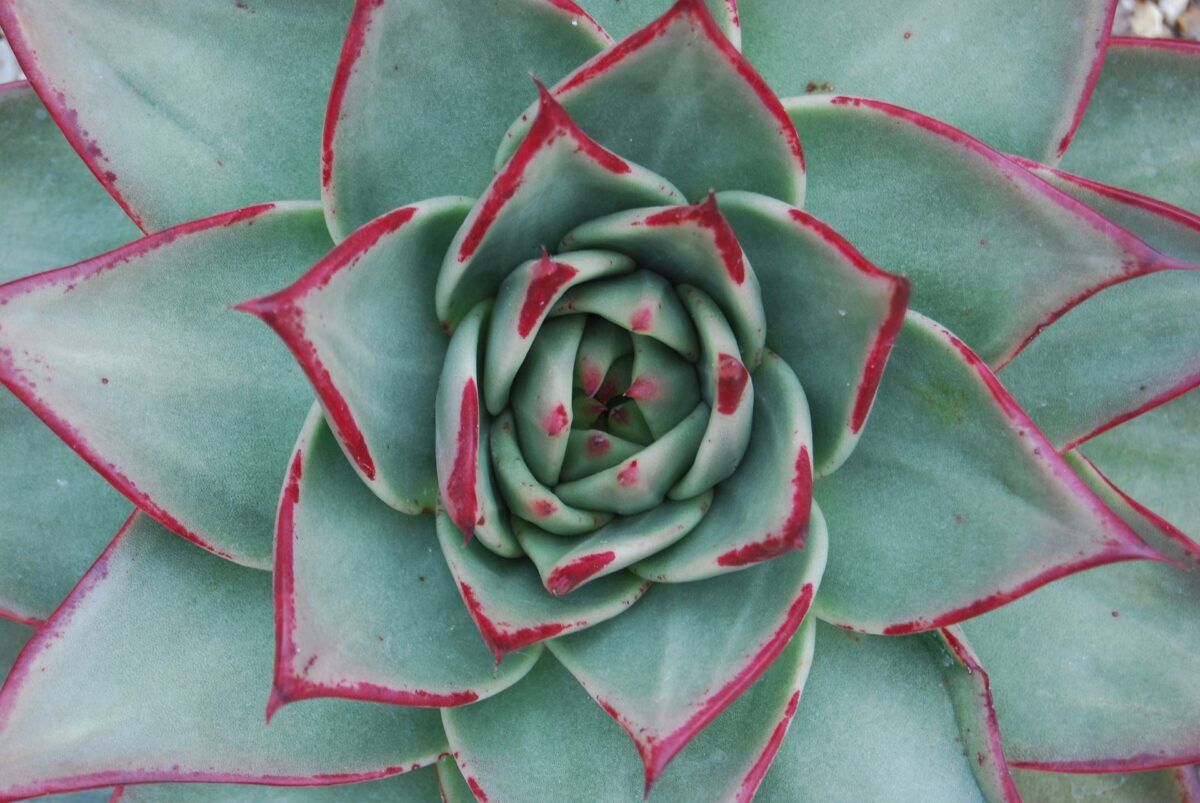
コメント